Lion’s Mane Jellyfish Facts
- First of all, one specific fact about the remarkable Lion’s Mane Jellyfish remains the most notable of all details of the animal. That’s the simple fact that this awesome creature represents the largest of all known types of jellyfish. However, it does not constitute the longest known type of cnidarian in the world. That claim belongs to another species.
- Bearing the scientific name of Cyanea capillata, this fabulous animal also continues to be the source of some debate within the scientific community. That’s because zoologists do not completely agree on its taxonomy. Due to this disagreement, some population in different parts of the world receive different species assignments in some publications.
- Quite fortunately, the amazing Lion’s Mane Jellyfish appears to be maintaining a large and stable population, at least for the moment. Therefore, the IUCN presently has no listing for in on its Red List. However, the species does face several threats to its continued existence. These potential dangers such factors as boat strikes, and of course climate change.
Related Articles
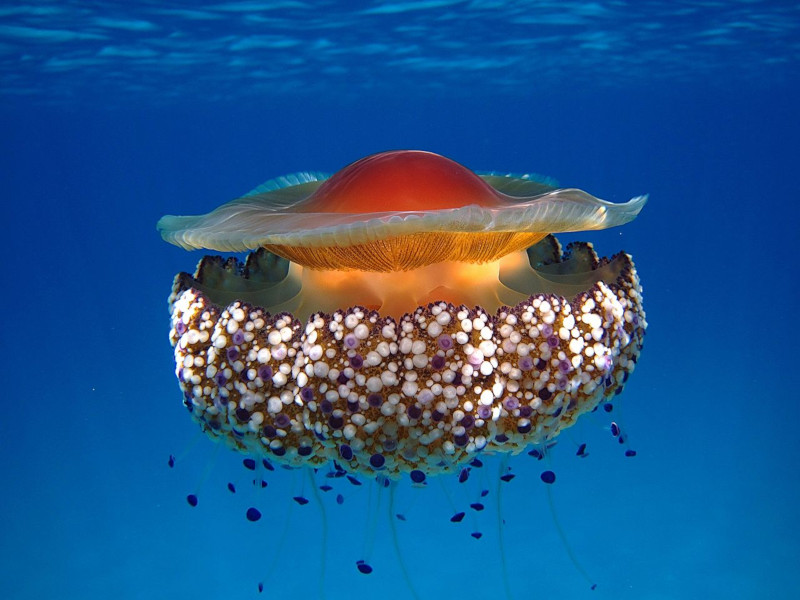
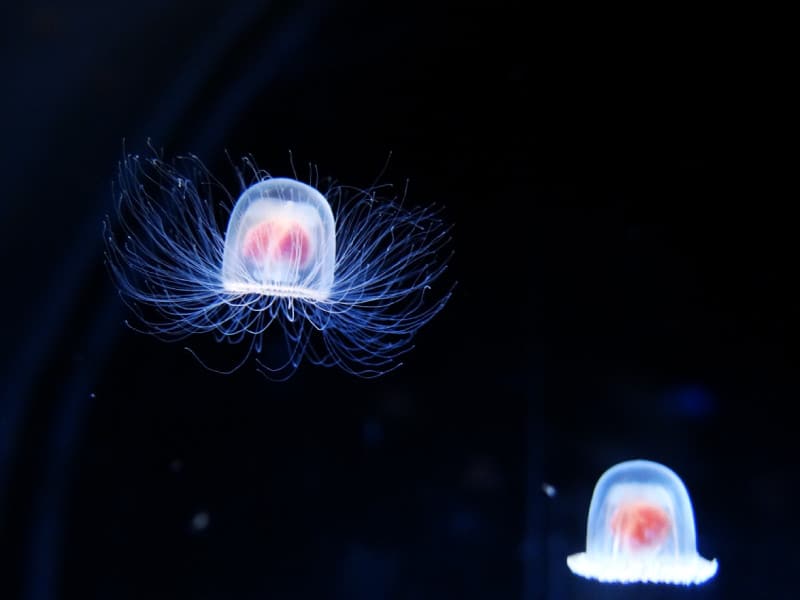
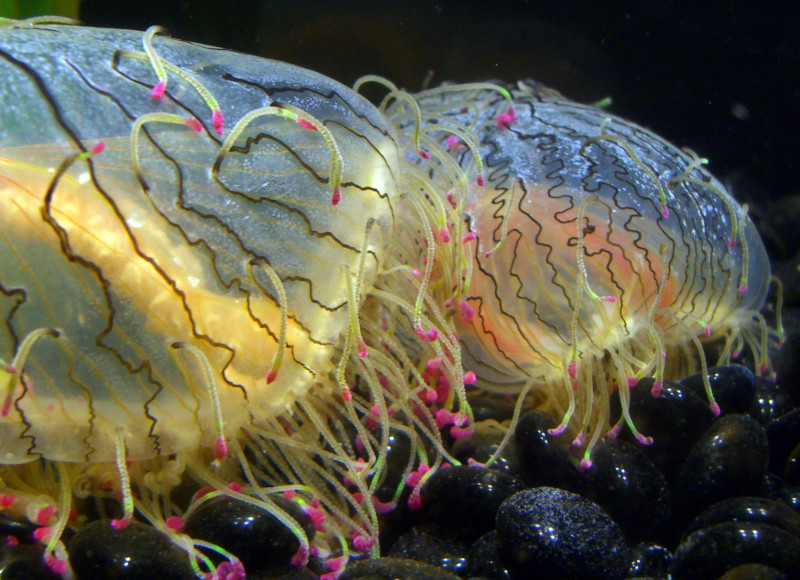
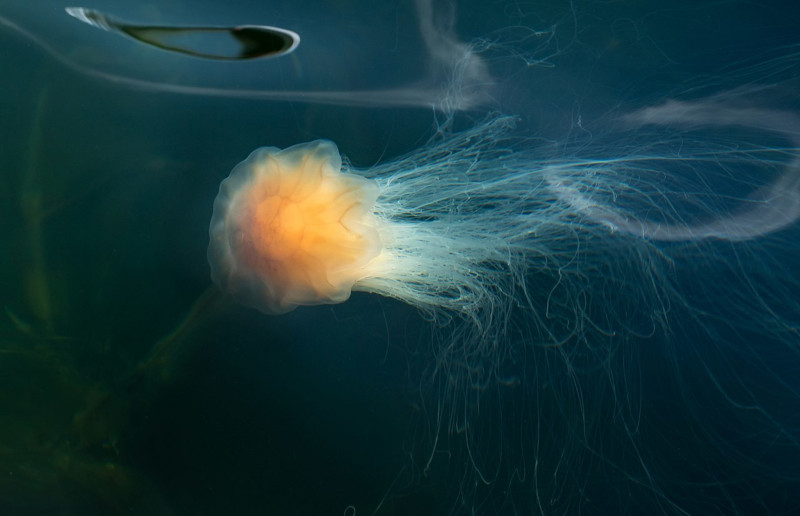
Lion’s Mane Jellyfish Physical Description
Without doubt, the most notable thing about the supremely gorgeous Lion’s Mane Jellyfish remains its sheer physical size. That’s because the impressive body of this invertebrate attains a maximum known width measuring about 7 ft (2.13 m). However, an average size for this remarkable species equals roughly 6.5 ft (2 m).
Furthermore, these impressive tentacles represent yet another of the several amazing physical characteristic of this species. That’s due to the fact that these appendages average a length of about 100 ft (30 m). But, a few exceptional specimens have possessed tentacles measuring a staggering 120 ft (36.6 m) in total length.
Furthermore, these fascinating features of the animal grow in eight separate and distinct clusters. In addition, each of these tightly grouped clusters themselves contains anywhere from 70 – 150 of the individual tentacles. The central bell from which these spring also divides into eight separate lobes.
Additionally, the coloring of individual specimens of the Lion’s Mane Jellyfish appears to change with age. Firstly, smaller and younger specimens generally display tan or light orange colors. Yet, as it grows, the color deepens. As a result of this process, the oldest and largest individuals tend to be dark purple or crimson.
- Kingdom: Animalia
- Phylum: Cnidaria
- Class: Scyphozoa
- Order: Semaeostomeae
- Family: Cyaneidae
- Genus: Cyanea
- Species: C. capillata
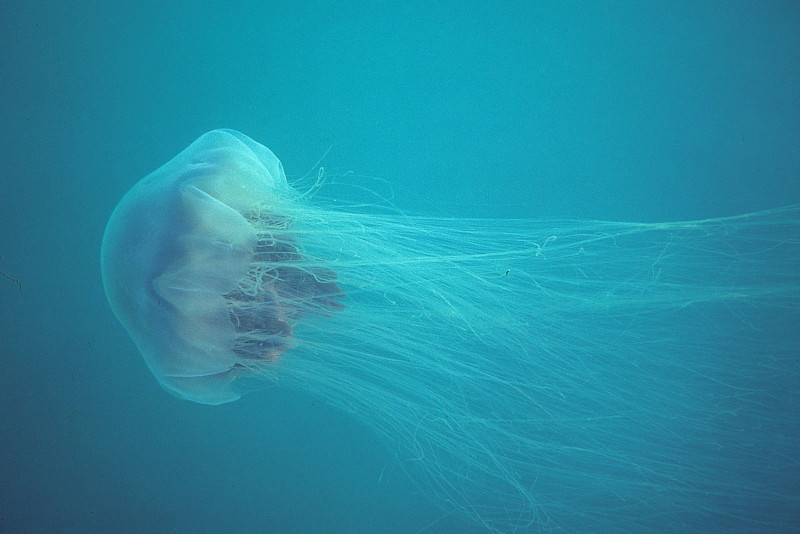
Lion’s Mane Jellyfish Distribution, Habitat, and Ecology
The magnificent Lion’s Mane Jellyfish evolved as native to a restricted area of the world. That holds true due to the fact that evolution birthed it in the region comprising the northern Atlantic Ocean, and the northern Pacific Ocean. Further, the majority of known individuals live in the Irish Sea, the North Sea, the English Channel, and into some western Scandinavian waters.
Nevertheless, even within this limited zone of habitation, the impressive creature has decided habitat preferences. That’s because it typically lives within a very specific range of depths. Further, this range extends from just below the surface of the water to a depth of roughly 66 ft (20.1 m). As a result, the ever-present ocean currents frequently carry it great distances, much like the Velella.
Like other cnidarians, the awesome Lion’s Mane Jellyfish evolved as a carnivore. For this purpose, its tentacles serve it quite well. These appendages sting and capture its prey. Although this varies depending on exact location, it generally consists of a wide range of fish species, and even smaller jellyfish. In turn its own predators mainly include sea turtles, seabirds, and larger fish.
Much like the related Pacific Sea Nettle, this species reproduces both sexually and asexually. Furthermore, it goes through four distinct life stages. Sequentially, these consist of the larval, polyp, ephyrae, and medusa stages. Once laid, females carry the eggs in the tentacles until old enough to be set on a hard surface. Once mature, an average lifespan equals about one year.
Species Sharing Its Range
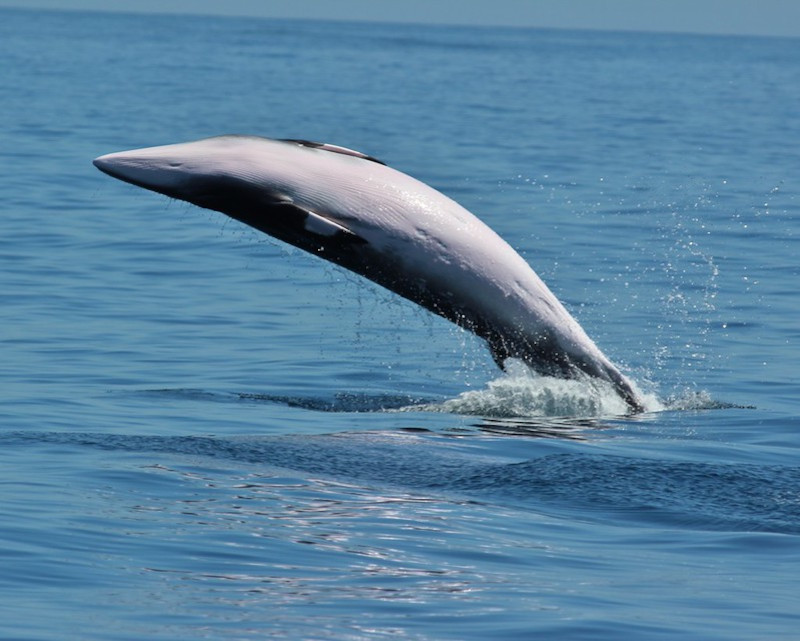
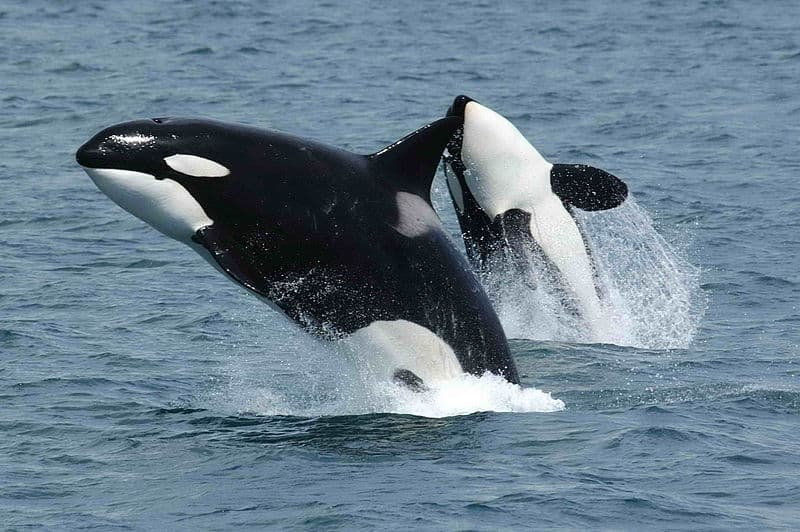
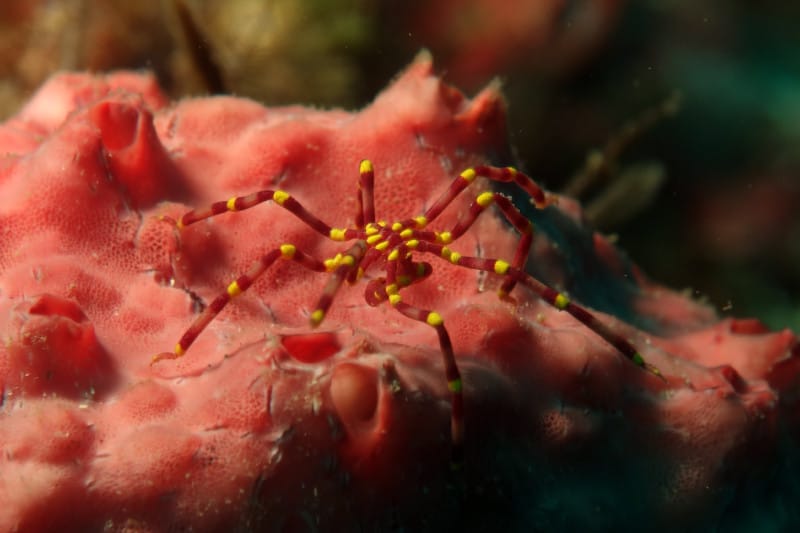
Check out our other articles on 5 Geological Wonders of Wyoming, Northern Bald Ibis, Tiger Leaping Gorge, Skeleton Flower, Pellucid Hawk Moth, Vietnamese Centipede, Spotted Seahorse









Leave a Reply